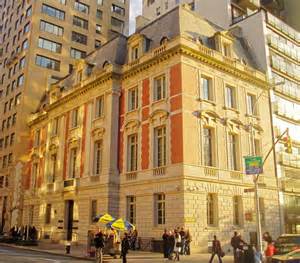Oct 9 2025 - May 4 2026
New York City, NY
A spotlight on one of the greatest Austrian decorative artists of his generation, featuring approximately 50 objects.
“Dagobert Peche: Ornamental Genius” is the first exhibition devoted to this significant figure since the Neue Galerie’s seminal exhibition of his work in 2002. This show will feature approximately 50 works, including objects from the museum’s holdings alongside loans from local private collections. A highlight of this show is the inclusion of objects that can be traced to the Wiener Werkstätte (Vienna Workshops) of America, the firm’s short-lived Fifth Avenue showroom that was open from 1922-23.
Dagobert Peche (1887-1923) was one of the greatest Austrian decorative artists of his generation. Peche studied architecture at his father’s behest, even though he preferred to be a painter. Peche first made an impact on the Viennese art scene in 1911 when he met architect Josef Hoffmann, who was a cofounder of both the Vienna Secession and the Wiener Werkstätte. Peche’s earliest textile designs for the firm date to that year, and they include floral patterns such as Einsame Blume (Lonely Flower), Danaeblume (Danae’s Flower), and Gletscherblume (Glacier Flower). He officially joined the Wiener Werkstätte in the spring of 1915 but was called up for military service in October 1916. Following a case of appendicitis, Peche was relieved of duty and dispatched to lead the Zürich branch of the Wiener Werkstätte in 1917.
Peche had a passion for the decorative, and he produced interiors and objects of incredible imagination and whimsy. A devotee of nature, Peche reinvented motifs from the natural world, including fanciful animals and fruits, often adorned with sinuous vines, as exemplified by his fantasy bird from 1920. Such ornate handcrafted silver objects are among the most splendid works produced by the Wiener Werkstätte. References to Greek mythology, especially figures from Ovid’s Metamorphoses, such as Daphne—a nymph who was transformed into a laurel tree to escape the amorous attention of Apollo—are another leitmotif. The act of evolving from one state to another was an ongoing interest and a defining characteristic of his style.
At the end of 1919, Peche returned to Vienna and lived in impoverished conditions. During this period, Peche experimented with modest materials of a more ephemeral nature, such as paper and other items, which were employed to craft holiday ornaments and toys. He suffered from failing health and died at the age of 36 due to cancer. In a tribute published after his death, Hoffmann praised Peche as the “greatest ornamental genius Austria has produced since the Baroque.” With this exhibition, we honor Peche’s indomitable creative spirit.
Credit: Exhibition overview from museum website
Exhibition Venues & Dates
Oct 9 2025 - May 4 2026
New York City, NY
